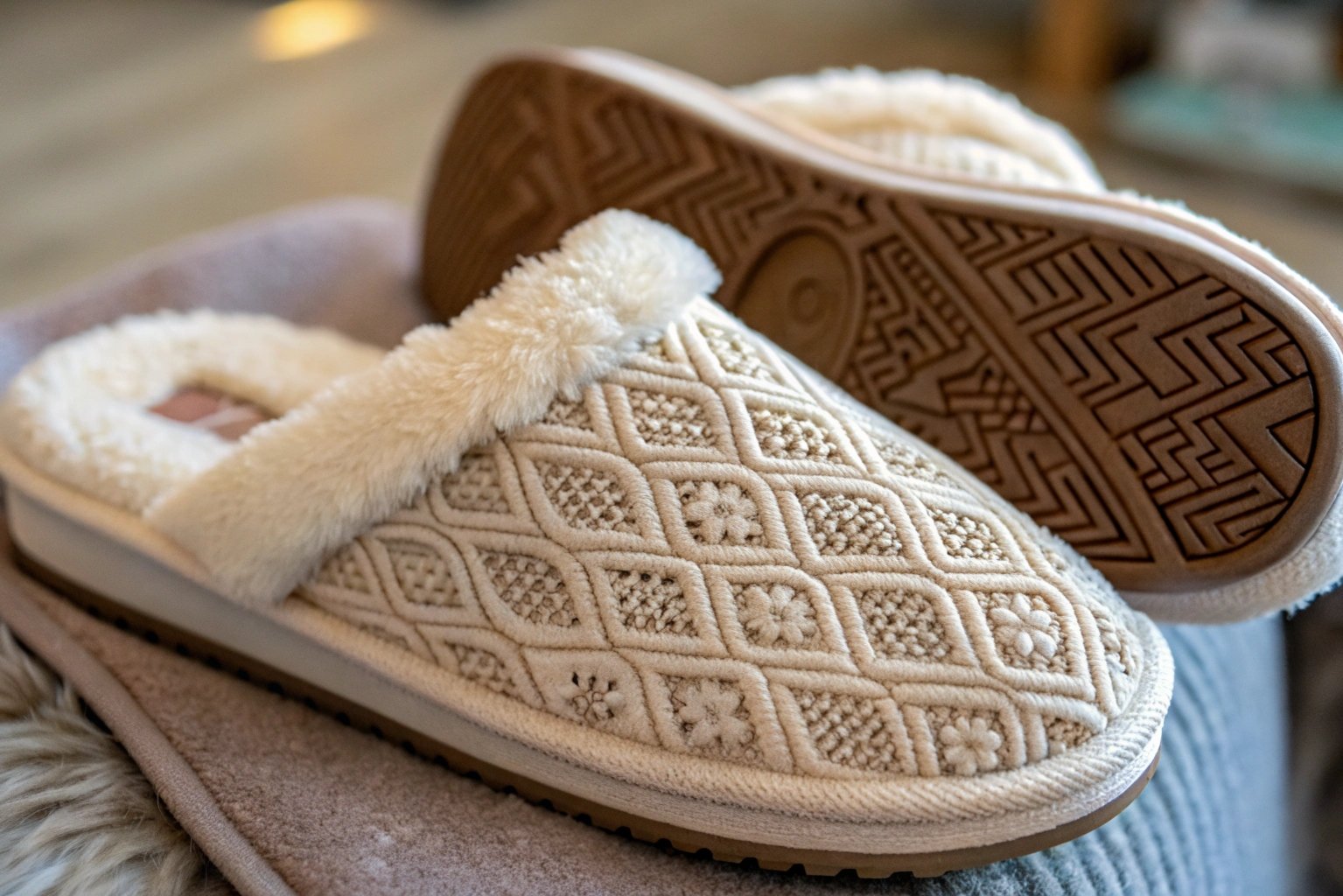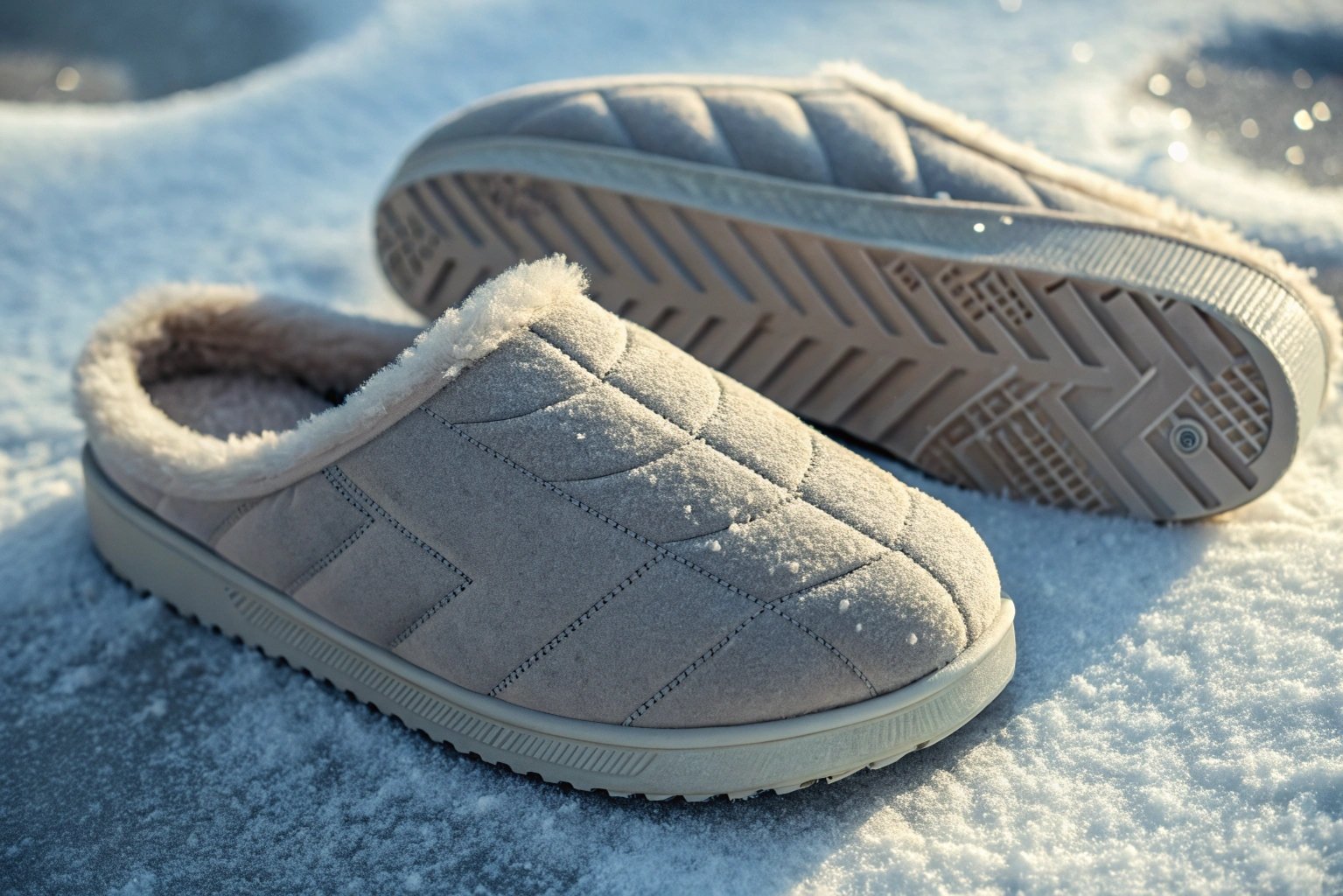Worried about slipping on ice this winter? You’re not alone! Many people want safe winter slippers.
The anti-slip lining on winter slippers can be created both with pre-made molds and through post-processing. It depends on the design and manufacturing process.

So, you are probably wondering how we, as a slipper manufacturer, deal with anti-slip linings. Let’s dive deeper.
How are anti-slip patterns made using pre-made molds?
Slipping is dangerous, right? A good sole can stop that.
Pre-made molds create the anti-slip pattern during the sole’s formation. The mold has a raised pattern that presses into the sole material.

Using pre-made molds is efficient for large-scale production. We use this method mostly for EVA plastic slippers, and for some ODM home slippers where the sole design is finalized and unlikely to change frequently.
Here is a breakdown of how pre-made molds are used:
| Step | Description | Advantages | Disadvantages |
|---|---|---|---|
| Mold Creation | A mold is created with the negative of the desired anti-slip pattern. This mold can be made of steel or aluminum, depending on the volume. | High precision, repeatable results, efficient for large-scale production. | High initial cost for mold creation, difficult to modify the design once the mold is created. |
| Sole Molding | The sole material (e.g., EVA, rubber) is injected or pressed into the mold. | Consistent pattern, durable, and long-lasting anti-slip properties. | Limited design flexibility; each design requires a new mold. |
| Cooling | The sole cools and hardens, taking on the anti-slip pattern from the mold. | Minimal post-processing required, reduced labor costs. | Requires precise temperature control during the cooling process to prevent deformation. |
| Ejection | The finished sole is ejected from the mold. | High production speed, lower per-unit cost for large volumes. | Not suitable for small batches or highly customized designs. |
This molding ensures that the pattern is integral to the sole. So, it will last longer.
What post-processing methods are used to add anti-slip features?
Want to add grip after the sole is made? It’s possible!
Post-processing applies the anti-slip lining after the main sole is created. This can involve gluing on textured materials or spraying on a coating.

Post-processing offers more flexibility. It lets us customize the anti-slip features after the sole is already made. This method is useful for both OEM and ODM home slippers, especially when customers request unique patterns or specific materials for enhanced grip.
Here’s a table to illustrate the post-processing methods:
| Method | Description | Advantages | Disadvantages |
|---|---|---|---|
| Gluing Textured Pads | Attaching rubber or silicone pads with adhesive to the sole. | Cost-effective for small batches, allows for varied materials and patterns. | The adhesive may degrade over time, potentially reducing the lifespan and performance. |
| Spray-On Coatings | Applying a non-slip coating to the sole using a spray gun. | Quick application, creates a thin and even layer, suitable for complex shapes. | The coating may wear off with use, requiring reapplication or replacement. |
| Screen Printing | Printing a non-slip pattern onto the sole using a screen. | Good for detailed designs, cost-effective for medium-sized production runs. | The pattern may fade or peel over time, depending on the ink and surface. |
| Laser Etching | Using a laser to create a textured pattern on the sole. | Precise and durable patterns, suitable for a range of materials. | Higher initial investment for equipment, slower process than other methods. |
I recall one customer wanted a very specific snowflake pattern on the sole for the Christmas season. We were able to quickly implement this using screen printing, which allowed us to meet their tight deadline without needing to create a new mold.
Conclusion
Anti-slip linings on winter slippers can be made with molds or added after. The best method depends on the design and order size.

